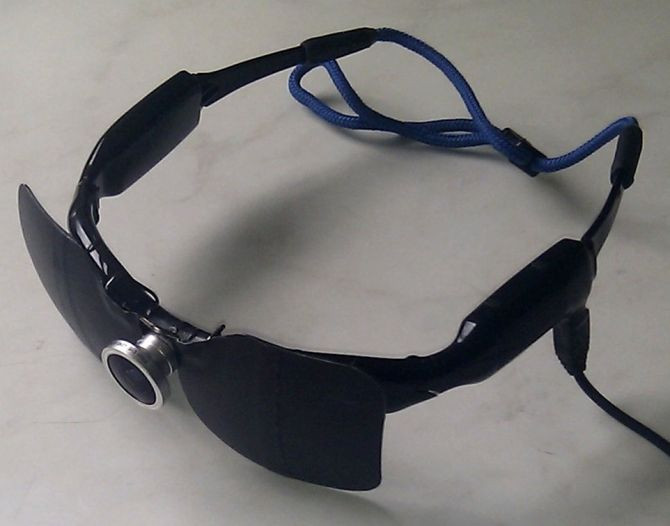New Device Lets the Blind 'Read' and 'See'

The blind are passing eye tests and seeing the world around them thanks to a new device that converts images to sound. These sounds guide the blind to interpret objects, people and even expressions.
The sensory substitution device is called The vOICe and was developed by Dr. Peter Meijer. The vOICe looks like a pair of sunglasses but it is actually a head-mounted camera. The camera captures images around the blind individual which are then translated by a computer program. The images become soundscapes that are then interpreted by the user. Changes in volume and pitch determine brightness and height and colors are spoken to the individual.
A new study showed that by using The vOICe, led by Amir Amedi from The Edmond and Lily Safra Center for Brain Sciences at The Hebrew University of Jerusalem, blind individuals could pass the Snellen Chart.
The Snellen Chart is a card held 20 feet away from an individual and features a series of increasingly smaller “E’s” that are place in a variety of positions. Normal vision is considered 20/20 which means that an individual can read a certain sized letter from a distance of 20 feet. If you have 20/30 vision, for example, that means you can read letters that a person with 20/20 vision could read from 30 feet away.
Blindness, according to the World Health Organization (WHO), is 20/400. Researchers enrolled eight blind individuals to read the Snellen chart using The vOICe device. The device let the blind individuals pass the Snellen chart for blindness. The eight individuals could reached the 20/360 level of the Snellen chart, moving them from the WHO criterion for blindness into the low-vision category.
Dr. Amedi and researchers have been training blind individuals to use the device to great effect. Some of the best users of the device can locate individuals in a room, determine posture, identify objects and determine facial expressions. The vOICe can be a cheaper alternative than retinal prostheses.
Retinal prostheses, or bionic eyes as researchers call them, provide the sensation of sight and may help users improve sight resolution but usage is limited. The bionic eyes are only available for certain types of blindness and are very costly which limits its usefulness. The vOICe also has the advantage of being non-invasive and would not require surgery, unlike bionic eyes. Researchers hope sensory substitution devices can let the blind ‘see’ the world like people with normal sight.
The study was published in PLoS ONE.



























